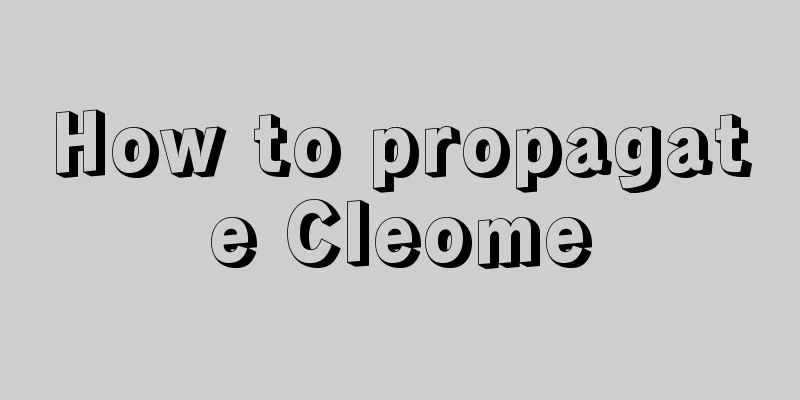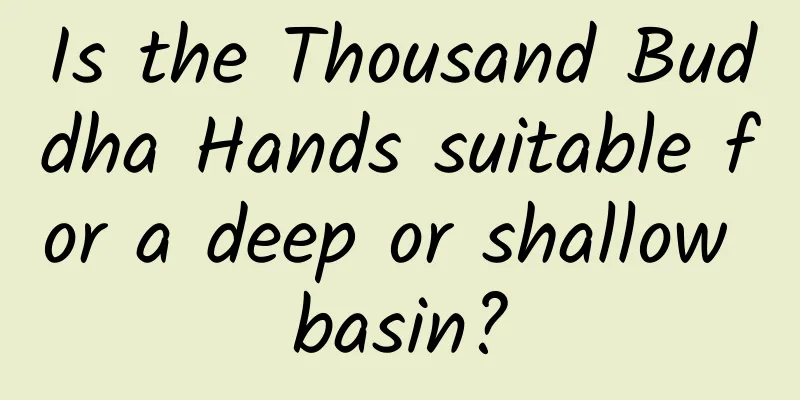How to propagate Cleome

Cutting mediumIt is the nutrient soil or river sand, peat soil and other materials used for cuttings. Due to limited conditions, it is difficult to get an ideal cutting medium for home cuttings. It is recommended to use a prepared and sterilized cutting medium. Medium-coarse river sand can also be used, but it must be rinsed with clean water several times before use. Do not use sea sand or river sand from saline-alkali areas as they are not suitable for the growth of flowers and plants. The branches used for cuttings are called cuttings. Usually combined with the pinching work, the picked strong, disease-free and insect-free tops are used as cuttings, and the tops are directly used for cuttings. Cutting temperatureThe optimum temperature for rooting of cuttings is 18℃-25℃. Below 18℃, rooting of cuttings is difficult and slow; above 25℃, the cut ends of cuttings are easily infected by pathogens and rot, and the higher the temperature, the greater the proportion of rot. When encountering low temperatures after cuttings, the main insulation measure is to wrap the flower pots or containers used for cuttings with film; when the temperature is too high after cuttings, the main cooling measure is to shade the cuttings, blocking 50-80% of the sunlight, and at the same time, spray the cuttings 3-5 times a day. On sunny days with higher temperatures, the number of sprays is more, and on rainy days with lower temperatures and higher temperatures, the number of sprays is reduced or no spraying is performed. Cutting maintenanceAfter cuttings, the relative humidity of the air must be maintained at 75-85%. You can increase the humidity by spraying the cuttings 1-3 times a day. The higher the temperature on sunny days, the more times you spray. The lower the temperature on rainy days, the less often you spray or you don’t spray at all. However, if you spray too much, the cuttings will easily be infected by pathogens and rot, because many types of pathogens exist in water. Cutting propagation cannot be separated from sunlight. However, the stronger the light, the higher the temperature inside the cuttings, the more vigorous the transpiration of the cuttings, the more water is consumed, which is not conducive to the survival of the cuttings. Therefore, after cuttings, 50-80% of the sunlight must be blocked. After the roots grow out, the shading net can be gradually removed: on sunny days, remove the shading net at 4:00 p.m. every day, and cover it before 9:00 am the next day. |
>>: When to sow butterfly flowers
Recommend
Top Ten Fortune Trees, How Many Fortune Trees Are There
1. Fortune Tree When it comes to plants that can ...
How to restore the beauty of succulent plants that have been turned into dogs and pancakes
The reasons for the growth of succulent plants 1....
Goldfish Chlorophytum breeding methods and precautions
1. Temperature Chlorophytum comosum is a tropical...
How to keep the pennywort neat and how to keep it in winter?
1. Keep it neat 1. Control light: Although suffic...
The "Clivia" is stuck and won't bloom, which makes people worried! Teach you 4 tricks to make the flower arrow bloom beautifully!
First, let's talk about the temperature diffe...
What is expansive soil?
Expansive soil, also known as bentonite and swell...
Ten tips for growing flowers
When growing flowers and grass at home, you will ...
Does aloe vera bloom?
Is it blooming? Aloe vera can bloom, but it is ve...
When should ginger be sown?
Ginger prefers warm and humid climatic conditions...
Benefits and Uses of Elderberry
Effects of Elderberry Medicinal effects Elderberr...
How to water Portulaca grandiflora
1. Growth habits Before understanding the water u...
When is the best time to plant cherry tomatoes?
Cherry tomatoes , also called small tomatoes, sma...
Is it toxic to grow vegetables in foam boxes? Can it cause cancer? Is it true?
Is it toxic to grow vegetables in foam boxes? Are...
Can figs be planted in pots?
Can figs be grown in pots? Figs can be grown in p...
You don’t need to buy rooting agents, you can do it at home in just 2 minutes, and the rooting rate is 100%!
White sugar solution The white sugar solution roo...









